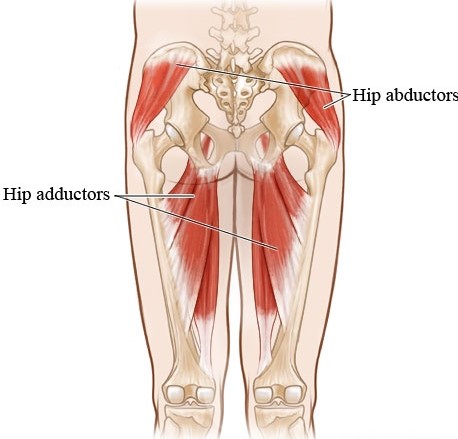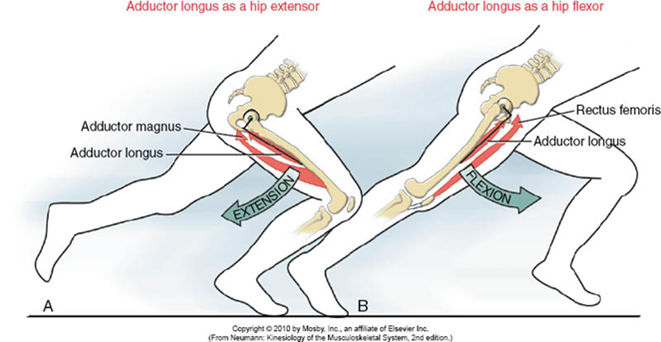Tendons are often the first thing thought of with regard to joint pain, but there are also small cushioning sacs surrounding our joints called bursae that can become inflamed. According to Dr. Robert Rister in "Healing Without Medication," bursitis occurs when the bursae fill with extra fluid in response to trauma. Bursitis can result from gout or rheumatoid arthritis, but the most common cause is repetitive motion--such as swinging a tennis racket. When bursae are overused, they become abraded and inflamed. They fill with fluid, causing them to impede movement rather than aid it. According to the Mayo Clinic, because most bursitis goes away on its own, self treatment is usually the best option. There are several natural methods to speed it along.
Compresses
In "1000 Cures for 200 Ailments," conventional medicine expert Christine Gustafson recommends hot and cold compresses. Cold compresses may be most useful for the first day or two in order to prevent swelling. After that, you can alternate between warm and cold compresses for 20 minutes at a time, three times a day.
Stretching and Physical Activity
According to Dr. Gustafson, although your instinct is to protect the joint by keeping it immobile, total physical inactivity can slow your recovery. Stretch daily to improve the range of motion of the affected joint and the entire body. This increases blood flow to the joint, speeding healing. It also prevents recurrence of the bursitis. And although you shouldn't perform the activity that initially caused the bursitis, it's important to still exercise the affected joint--though you may need to be gentle with it.
Anti-Inflammatory Diet
In "1000 Cures for 200 Ailments," naturopathy expert Dr. Geovanni Espinosa advises an anti-inflammatory diet. Eat lots of fish and walnuts, which contain high levels of omega-3 fatty acids. Omega-3 has an anti-inflammatory effect and increases joint lubrication. Avoid refined sugars and hydrogenated oils.
Supplements
In "Healing Without Medication," Dr. Robert Rister suggests vitamin B12. He says that in the 1950s, researchers discovered that a shot of vitamin B12 to the affected joint relieved bursitis pain and stopped calcification. Dr. Rister says although it's not as effective as a shot, consuming 1,000mg to 2,000mg of vitamin B a day can provide some of the same relief. In "Solve It With Supplements," Dr. Robert Schulman says proteolic digestive enzymes can be as effective in reducing bursitis pain as nonsteroidal anti-inflammatory drugs such as aspirin. Vitamin C is necessary for the production of collagen, which is a necessary component of connective tissue. Dr. Schulman suggests you take 500mg to 1,000mg of buffered vitamin C twice daily with food. Glucosamine and chondroitin are both also very effective in reducing joint inflammation and building strong connective tissue. You can find it with MSM (methylsulfonylmethane) included. MSM boosts the effects of glucosamine and chondroitin, acting as an anti-inflammatory.
Herbs
Dr. David Kiefer, herbalism expert for "1000 Cures for 200 Ailments," highly recommends the topical application of castor oil to relieve bursitis pain. Put 5mL to 10mL on a washcloth. Place the washcloth on the affected area and wrap it with plastic wrap. Apply external heat to the wrap with warm towels. Do this for 30 to 45 minutes three times a day. Boswellia is a tree used in traditional Indian medicine. Dr. Schulman suggests taking 450mg to 1,200mg of boswellia extract split into two or three doses through the day. It contains boswellic acids, which reduce pain and inflammation in joints. White willow bark is an extremely effective anti-inflammatory and analgesic. It contains salicin, the precursor to the main ingredient in aspirin, salicylic acid. Though it works in a similar manner, it doesn't irritate the stomach as aspirin does.
Stretching Exercises for Hip Bursitis
Hip bursitis -- inflammation of fluid-filled sacs that provide cushioning around bones -- is a painful condition that increases friction in your joints. Stretches decrease tightness in muscles that may be contributing to this condition. These exercises target muscles that move your leg at the hip joint. Stretches to help relieve hip bursitis are typically held for 20 to 30 seconds each and repeated several times per day.
You can try out Lajin (tendons stretching), an ancient Chinese self-healing positions. (Click Here for more details)
Abductors and Adductors
Muscles called abductors run along the outside of your thigh and your leg out to the side from your hip joint. These muscles can be stretched in a standing position by crossing the unaffected leg in front of the painful leg, then leaning away from the painful hip until a stretch is felt along the outside of the hip. Adductor muscles move your leg inward and can be stretched in multiple positions. Standing with the legs more than shoulder-width apart, the knee on the non-injured side is slowly bent out to the side until a stretch is felt on the inner thigh of the affected leg.
Rotators
Tightness in the muscles that rotate your leg at the hip can contribute to bursitis. Muscles that rotate your leg inward can be stretched in a sitting position by resting the ankle of the affected leg on the thigh of the unaffected leg. Gently pressing down on the knee of the affected leg will increase the amount of stretch, which is felt in the buttocks. Muscles that rotate your leg outward can be stretched while lying on your back. The affected knee is bent toward your chest and gently pulled by the opposite arm toward the opposite shoulder. This stretch will also be felt in the buttocks.
The lateral rotator group is a group of six small muscles of the hip which all externally (laterally) rotate the femur in the hip joint. It consists of the following muscles: Piriformis, gemellus superior, obturator internus, gemellus inferior, quadratus femoris and the obturator externus.
Flexors and Extensors
Muscles that raise your leg toward the front of your body at the hip are called flexors. In a standing position, these muscles are stretched by bending the knee, bringing the heel toward your buttock, then grabbing the ankle with your hand. This stretch can also be performed lying on your side or stomach. Extensor muscles move your leg backward at the hip joint. These muscles can be stretched while standing, sitting or lying on your back. In a standing position, the heel of the affected leg is propped in front of the person on a small step. Keeping the knee straight, a stretch can be felt while slowly bending forward at the waist.
Low Back Stretches
Muscles that enable leg movement at the hip and low back muscles both attach to your pelvis. Tightness in your low back muscles may accompany hip muscle tightness and contribute to hip bursitis. Bringing both knees toward your chest while lying on your back will stretch these muscles. The amount of stretch can be increased by gently pulling your knees closer to your chest using your arms.
Foods to Treat Bursitis
The human body has hundreds of bursa located between the bones and soft tissue, like tendons, muscles or ligaments. These small, fluid-filled, slippery sacs are responsible for reducing friction between the soft tissue and bones in the elbows, knees, hips, shoulders and ankles. When these sacs get overused or strained from repetitive stress, they can become inflamed and be quite painful in a particular joint, resulting in bursitis. If caught early, home treatment can be successful and eating certain foods can help alleviate the inflammation and repair the damaged cells.
Orange Juice
Certain fruits like oranges and grapefruit are high in vitamin C, which helps damaged cells and tissues, like those found in bursitis, regenerate and repair themselves. A diet deficient in vitamin C can also lead to a weak bursa, making it more prone to inflammation and infection.
Pineapple and Papaya
Pineapple is rich in bromelain and papayas contain papain. Both ingredients can reduce inflammation caused by bursitis. They can be eaten whole or juiced to get this benefit.
Broccoli, Spinach and Bananas
Broccoli, spinach and bananas are rich in vitamin B complex, including riboflavin, niacin and thiamine, which help treat bursitis. These nutrients repair damaged cells and regenerate healthy ones. They also help prevent infection of the damaged cells caused by bursitis.
Avocadoes and Tomatoes
Foods like avocadoes and tomatoes are rich in vitamin E, an antioxidant that destroys free radicals in the body. Free radicals are toxins that cause cell damage. Increasing your intake of vitamin E foods will help fight damage caused by bursitis.
Omega-3
Omega-3 fatty acids are found in fish oil and flaxseed oil. This compound decreases inflammation caused by bursitis and develops strong, healthy tissues instead. You can find omega-3 in supplements, salmon, walnuts and olive oil.






No comments:
Post a Comment